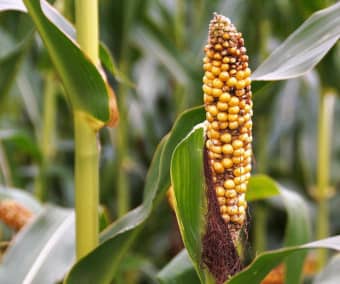Table of Contents
Introduction
In writing your thesis, one of the first terms that you encounter is the word variable. Failure to understand the meaning and the usefulness of variables in your study will prevent you from doing excellent research. What are variables, and how do you use variables in your research?
I explain this key research concept below with lots of examples of variables commonly used in a study.
You may find it challenging to understand just what variables are in research, especially those that deal with quantitative data analysis. This initial difficulty about variables becomes much more confusing when you encounter the phrases “dependent variable” and “independent variable” as you go deeper in studying this vital concept of research, as well as statistics.
Understanding what variables mean is crucial in writing your thesis proposal because you will need these in constructing your conceptual framework and in analyzing the data that you have gathered.
Therefore, it is a must that you should be able to grasp thoroughly the meaning of variables and ways on how to measure them. Yes, the variables should be measurable so that you will use your data for statistical analysis.
I will strengthen your understanding by providing examples of phenomena and their corresponding variables below.
Definition of Variable
Variables are those simplified portions of the complex phenomena that you intend to study. The word variable is derived from the root word “vary,” meaning, changing in amount, volume, number, form, nature, or type. These variables should be measurable, i.e., they can be counted or subjected to a scale.
The next section provides examples of variables related to climate change, academic performance, crime, fish kill, crop growth, and how content goes viral. Note that the variables in these phenomena can be measured, except the last one, where a bit more work is required.
Examples of Variables in Research: 6 Phenomena
The following are examples of phenomena from a global to a local perspective. The corresponding list of variables is given to illustrate how complex phenomena can be broken down into manageable pieces for better understanding and to subject the phenomena to research.
Phenomenon 1: Climate change
Examples of variables related to climate change:
- sea level
- temperature
- the amount of carbon emission
- the amount of rainfall
Phenomenon 2: Crime and violence in the streets
Examples of variables related to crime and violence:
- number of robberies
- number of attempted murders
- number of prisoners
- number of crime victims
- number of laws enforcers
- number of convictions
- number of carnapping incidents
Phenomenon 3: Poor performance of students in college entrance exams
Examples of variables related to poor academic performance:
- entrance exam score
- number of hours devoted to studying
- student-teacher ratio
- number of students in the class
- educational attainment of teachers
- teaching style
- the distance of school from home
- number of hours devoted by parents in providing tutorial support
Phenomenon 4: Fish kill
Examples of variables related to fish kill:
- dissolved oxygen
- water salinity
- temperature
- age of fish
- presence or absence of parasites
- presence or absence of heavy metal
- stocking density
Phenomenon 5: Poor crop growth
Examples of variables related to poor crop growth:
- the amount of nitrogen in the soil
- the amount of phosphorous in the soil
- the amount of potassium in the ground
- the amount of rainfall
- frequency of weeding
- type of soil
- temperature

Phenomenon 6: How Content Goes Viral
- positive,
- interesting,
- prominent,
- useful,
- surprising, and
- causing physiological arousal.
Notice in the above variable examples that all the factors listed under the phenomena can be counted or measured using an ordinal, ratio, or interval scale, except for the last one. The factors that influence how content goes viral are essentially subjective.
But researchers devised ways to measure those variables by grouping the respondents’ answers on whether content is positive, interesting, prominent, among others (see the full description here).
Thus, the variables in the last phenomenon represent the nominal scale of measuring variables.
The expected values derived from these variables will be in terms of numbers, amount, category, or type. Quantified variables allow statistical analysis. Variable descriptions, correlations, or differences are then determined.
Difference Between Independent and Dependent Variables
Which of the above examples of variables are the independent and the dependent variables?
Independent Variables
The independent variables are those variables that may influence or affect the other variable, i.e., the dependent variable.
For example, in the second phenomenon, i.e., crime and violence in the streets, the independent variables are the number of law enforcers. If there are more law enforcers, it is expected that it will reduce the following:
- number of robberies,
- number of attempted murders,
- number of prisoners,
- number of crime victims, and
- the number of carnapping incidents.
The five variables listed under crime and violence in the streets as the theme of a study are all dependent variables.
Dependent Variables
The dependent variable, as previously mentioned, is the variable affected or influenced by the independent variable.
For example, in the first phenomenon on climate change, temperature as the independent variable influences sea level rise, the dependent variable. Increased temperature will cause the expansion of water in the sea. Thus, sea-level rise on a global scale will occur.
I will leave the classification of the other variables to you. Find out whether those are independent or dependent variables. Note, however, that some variables can be both independent or dependent variables, as the context of the study dictates.
Finding the relationship between variables
How will you know that one variable may cause the other to behave in a certain way?
Finding the relationship between variables requires a thorough review of the literature. Through a review of the relevant and reliable literature, you will find out which variables influence the other variable. You do not just guess relationships between variables. The entire process is the essence of research.
At this point, I believe that the concept of the variable is now clear to you. Share this information with your peers, who may have difficulty in understanding what the variables are in research.


Well, that seems okay Enomen. Just how do you propose to measure attitude?
Great write up!! Thank you immensely.
Unfortunately, i still find it difficult writing a conceptual framework. My topic is: Attitude towards infertility screening among males. Here, i suppose that “attitude” is the independent variable and “screening” the dependent variable. That is, whether males will subject themselves to screening is a function of attitude.
Please show more light on this.
Thanks again.
I want that
I want to be.10examples for (Iv and Dv)
Thank you so much. I only needed this. Great!
That’s too broad Salamarh, what do you want to find out in the study? Why do you want to assess home ownership? Have a clear purpose first that will aid you in coming up with your conceptual framework.
can you help with the variable for this topic: An assessment of home-ownership finance by mortgage institution
help me find variables,
challenging facing Tanzanian SME’s in creating sustainable competitive advantages through brand loyalty and brand awareness
Thank you for writing this.
Am doing a sociology paper this are some of the instructions. Explain why the social pattern interests you, and how it can be seen as a variable. Identify another variable that you think is a possible cause and explain why you think it might be a cause. Identify a third variable that you think is a possible consequence of your first variable and why you think it might be a consequence. (In other words, you need to identify three variables—A, B, and C. And you will focus on two hypotheses: A affects B, and B affects C.) Do not use a hypothesis that was covered in the readings or in class. Also, avoid hypotheses you know (for certain) are true or hypotheses that are necessarily true.
I have chosen
Poor performance of students in High school on exams
My 3 variables would be…
1. Exam score
2. Amount of hours devoted to studying
3. The number of hours dedicated by parents in providing tutorial support.
what do you think? is it okay and am lost in making 2 hypothesis. Please help!!
Dear Ari. Social patterns refer to trends and people’s behavior. Is exam score a trend or behavior? Find a social trend or behavior that is interesting and start from there. For example, you can inquire on the increasing hours spent by students online and their lack of actual, face-to-face interaction with peers. The greater affordability of internet connection may be a cause. And affordability may be caused by higher income among families.
Thank you for writing this.
Am doing a sociology paper this are some of the instructions. Explain why the social pattern interests you, and how it can be seen as a variable. Identify another variable that you think is a possible cause and explain why you think it might be a cause. Identify a third variable that you think is a possible consequence of your first variable and why you think it might be a consequence. (In other words, you need to identify three variables—A, B, and C. And you will focus on two hypotheses: A affects B, and B affects C.) Do not use a hypothesis that was covered in the readings or in class. Also, avoid hypotheses you know (for certain) are true or hypotheses that are necessarily true.
I have chosen
Poor performance of students in High school on exams
My 3 variables would be…
1. Exam score
2. Amount of hours devoted to studying
3. The number of hours dedicated by parents in providing tutorial support.
what do you think? is it okay and am lost in making 2 hypothesis. Please help!!
Dear Rahim, what do you mean by impact? Can you measure it? And what specific IT factor would you want to study? The point is, your study is too general/broad. Narrow it down further into something measurable. For example: IT might be knowledge of databases, and supply chain is time in moving the product. These factors are measurable.
Topic is
Impact of IT in supply chain
What are variables? Please help
This is really “wow” explanation. I had no ideas about the term “variable” in the writing of the thesis. Now I have some idea. Kindly help me to clarify my topic and its valuables . I intend to write on children’s right to education during emergencies. I want to see how the disaster risk management policy can be of importance in a particular country.
Dear Eddie, your topic is too broad. See comment below.
Dear Ahpz, you already mentioned your variables, i.e., job satisfaction as dependent variable and the reasons why they are satisfied (these are your independent variables).
Our title in thesis is
“An Analysis of job satisfaction of company(name)employee:basis for employee retention program”
Plz help me to know the variables for that topic and to create a theoretical framework.
Thank you
Hello
Can I ask you?what variable we can used to our thesis its all about Job Satisfaction?
this brainstorming is really vital towards my course of studies thx professor
Welcome Paul. I’m glad this article helped you.
this brainstorming is real vital towards my course of studies
Need your email address have a lot to ask
Thanks alooooooot